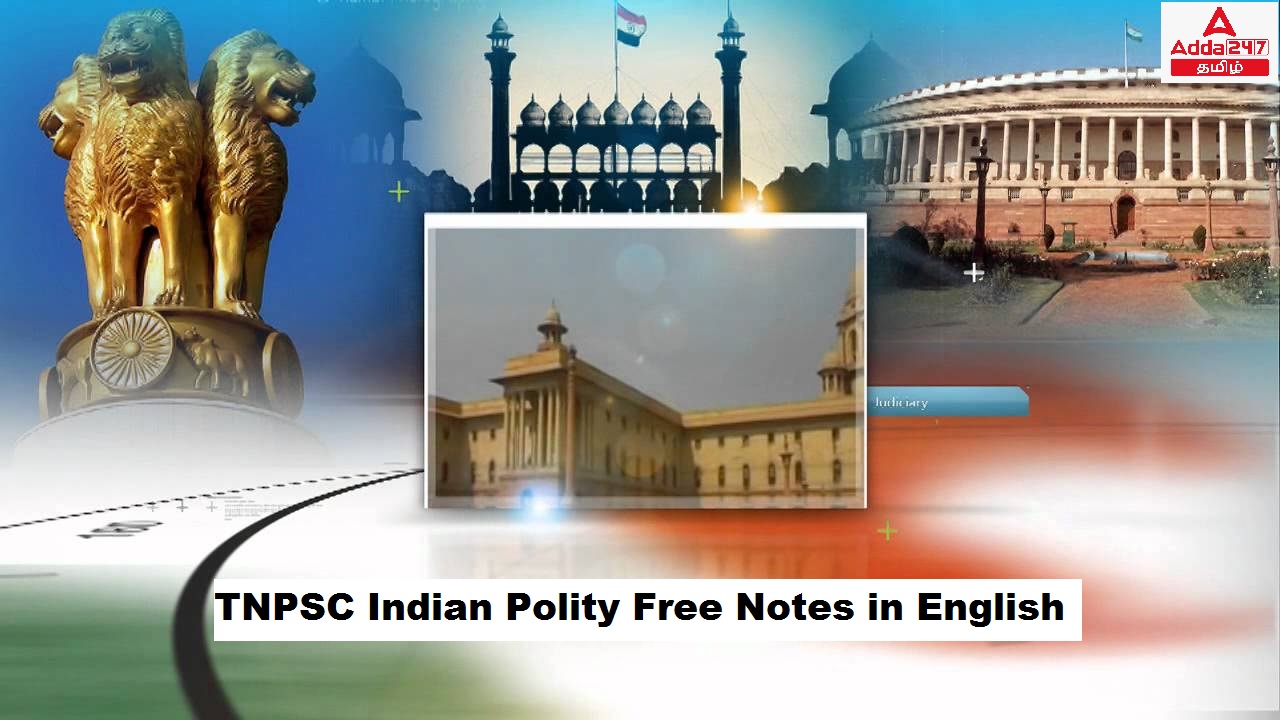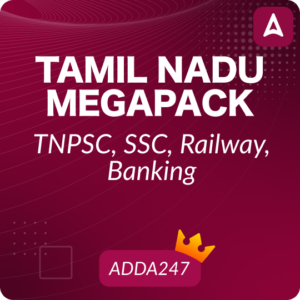இந்தக் கட்டுரையில், TNPSC குரூப் 1, குரூப் 2, குரூப் 2A, குரூப் 4 மாநிலப் போட்டித் தேர்வுகளான TNUSRB, TRB, TET, TNEB போன்றவற்றுக்கான முறைகள் இலவசக் குறிப்புகளைப் பெறுவீர்கள்.தேர்வுக்கு தயாராவோர் இங்குள்ள பாடக்குறிப்புகளை படித்து பயன்பெற வாழ்த்துகிறோம்.
Parliament of India
Introduction
The Parliament is the legislative organ of the Union Government.
Article 79 to 122 in Part V of the Constitution deals with the organization, composition,
duration, officers, procedures, privileges, powers and so on of the Parliament.
The Parliament of India consists of three parts. They are the President, Rajya Sabha (the
Council of States) and Lok Sabha (the House of the People).
The Rajya Sabha is the Upper House and the Lok Sabha is the Lower House. They are
termed as bicameral legislature.
Rajya Sabha
The Council of State or Rajya Sabha consists of 250 members. Out of this, 238 members
are elected by the method of indirect election from the States and the Union territories.
The members are nominated by the President from persons having special knowledge
or practical experience in the field of literature, science, sports, art and social service.
Qualification of Members
He should be a citizen of India.
He should not be less than 30 years of age.
He should not hold any office of profit under any Government.
He should be a person with a sound mind and monetarily solvent.
He should not be a member of the Lok Sabha or any other legislature.
Term of House
The Rajya Sabha is a permanent house and it cannot be dissolved.
The term of members of the Rajya Sabha is six years.
One-third of the members of Rajya Sabha retire every two years, and new members are
elected to fill the seats thus vacated.
The Vice President of India is the Ex-officio Chairperson of the Rajya Sabha.
The Deputy Chairperson of the Rajya Sabha is elected by the members of the Rajya
Sabha.
Election
Members of The Rajya Sabha are elected by the elected members of the ‘State
Legislative Assemblies’ in accordance with the system of proportional representation by
means of a single transferable vote.
This process of election is called “an indirect election” as they are not elected by the
people directly.
Functions of the Rajya Sabha
Any bill (except the money bills) needs to be approved by Rajya Sabha to get passed. If
the bill gets stuck for more than six months, then the President calls for a joint session
of both the houses to resolve the deadlock.
It has the same power as Lok Sabha for passing any constitutional amendment bill.
The members of the Rajya Sabha have the electoral power for the selection of President
and Vice President. Together with the members of Lok Sabha and all the State
Legislative Assemblies, they elect the President and Vice President.
It has power in the impeachment procedure of the president and judges of the Supreme
Court and High Court.
Rajya Sabha has the power to make a state list subject into National importance. Rajya
Sabha can also create or abolish an All India Service if, majority of the members (2/3 of
the total members) support it.
Lok Sabha
The Lok Sabha is the popular house of the Indian Parliament and contains elected
representatives of the people.
The maximum number of members who can be elected for the Lok Sabha is 552.
Out of these, 530 members are elected from different states and 13 members from the
Union Territories.
The President generally nominates two members belonging to the Anglo-Indian
community.
At present, the Lok Sabha consists of 545 members.
Qualification of Members
He should be a citizen of India.
He should not be less than 25 years of age.
He should have his name in electoral rolls in some part of the country.
He should not hold any office of profit under the Union or State Government.
He should be mentally sound and economically solvent.
The term of the House
Generally, the Lok Sabha enjoys a term of five years from the date of its first session.
It can be dissolved by the President before the expiry of its term on the advice of the
Prime Minister.
The emergency provisions of the Constitution enable the President to prorogue or
dissolve the Lok Sabha either on the advice of the Prime Minister or on being convinced
that no party or no alliance of parties enjoys necessary majority support in the House.
Election of the Loksabha
The members of the Lok Sabha are directly elected by the people of the constituencies
that are created on the basis of population.
The Election Commission of India arranges, supervises and conducts elections to the Lok
Sabha.
“Universal Adult Franchise” is followed while electing the members of the Lok Sabha. All
Indian citizens above 18 years of age, who are registered as voters will vote for their
representatives.
Functions of the Lok Sabha
Any bill can be introduced and passed in the Lok sabha (Including Money Bill).
It has the same power as the Rajya Sabha to participate in the case of the impeachment
of the President and the judges of Supreme Court.
It has the equal power as Rajya Sabha in passing any bill for a constitutional
amendment.
Lok Sabha members have the power to elect the President and Vice President.
The Motion of No Confidence can only be introduced in the Lok Sabha. If it is passed
then the Prime Minister and the Council of Ministers need to resign from their post.
**************************************************************************
| Adda247 TamilNadu Home page | Click here |
| Official Website=Adda247 | Click here |




